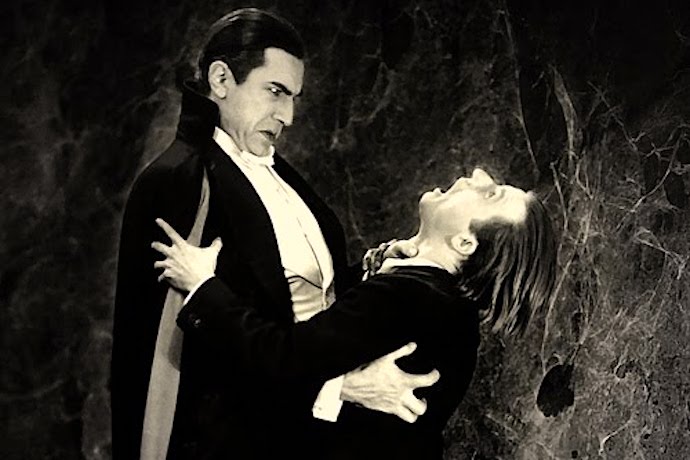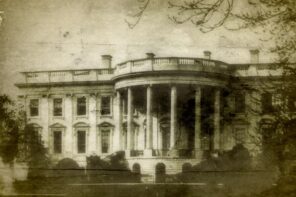Sometimes, the scholarly life means taking delight in unexpectedly relevant news items: a new adaptation of a book one has studied, an unearthed manuscript from one’s period of interest. Other times, it means being horrified when the objects of one’s study spill over into current events. Last weekend, in the aftermath of one of the worst anti-LGBTQ+ massacres in recent memory, I found myself experiencing the latter.
The motive for this shooting has not been proven beyond the shadow of a doubt. But the murders at Club Q in Colorado Springs, carried out by the openly homophobic grandson of a J6-supporting Republican assemblyman, seems practically designed to exemplify the pathologies of Christian nationalist culture today. The shooting transformed the Christian Right’s hostility to LGBTQ+ people in general, and trans people in particular, into a homicidal crusade (a term I use intentionally) against an enemy branded as demonic, corrupting . . . monstrous.
As such, it encapsulates the extent to which 21st century Christian nationalism isn’t just a set of policies or beliefs, but a story; and not just any story, but a Victorian Gothic fantasy. LGBTQ+ people, along with other vulnerable minorities in this country, are suffering the consequences of a 130-year-old living nightmare.
My new audio docuseries, Monster In The Mirror, investigates how the fiends of the contemporary Christian nationalist imagination have their roots in myths that preoccupied another White Christian empire obsessed with its own decline: late Victorian Britain.
While American Christian nationalism dates back to the pilgrims, my series examines how features of today’s God-and-country ideology owe a particular debt to the obsessions that transfixed the popular culture of Britain in the 1890s: the supposed “hordes” of immigrants diluting the nation’s racial stock; melancholy over the putative “weakness” of a once-great nation; panic over non-straight public expressions of sexuality; a sci-fi tinged apocalypticism, in which heroes and villains wield up-to-date technology to fight for the future of humanity; and above all, a conviction that the foes of White Christendom aren’t just ideological opponents, but outright monsters.
Take, for instance, Dracula, arguably the most famous monster examined in the series. In the episode focusing on Bram Stoker’s novel, scholar Stanley Stepanic discusses how its depiction of a disease-bearing foreigner channels White British paranoia about the growing numbers of Eastern European Jews flocking to Britain’s shores from the 1870s onward. In the episode, I point out that Dracula—and vampires by extension—became the quintessential anti-Christian villain, not least because of how they echo conspiracy theories, circulating almost a decade before the publication of The Protocols of the Elders of Zion, that powerful Jewish elites were “importing” poor Jewish migrants to Christian Britain.
The Jewish-coded monster who plots to colonize Britain with a demonic undead species now lurks, barely disguised, beneath a host of right-wing nightmares: the Right’s depictions of an omnipotent George Soros; QAnon’s talk of blood-drinking Democrats; and Herschel Walker’s recent bizarre reflections on the 1985 movie Fright Night—a rant that culminated in his comparing opponent Raphael Warnock to the suave, suit-wearing, “good looking” vampire that Fright Night clearly swiped from Bram Stoker.
Additionally, Dracula demonstrates the ideological function of Christian nationalism’s bestiary of villains: not simply to spook pious patriots, but to give them a satisfyingly powerful antagonist, over whom they can experience the pleasures of heavensent victory. The “terror-triumph complex,” as I call it, underpins the novel’s conflict between Dracula’s schemes and the heroes’ holy conspiracy.
Combining covert actions, feverish reinterpretations of news clippings (á la QAnon on an 8chan message board), and occasional graverobbing, the heroes act on the assumption that, in a modern age manipulated by Satanic forces, the servants of God must conduct their crusade behind closed doors. Their efforts culminate in a thrilling chase, doubtlessly responsible for a huge part of the book’s success, in which hero Jonathan Harker executes God’s vengeance by decapitating Dracula.
This tale of two conspiracies—the Satanic plotting of elites versus the sanctified plotting of white Christian Everymen—foreshadows the metanarrative behind the January 6th effort to “stop the steal,” through secretive collusion between politicians and domestic terrorist groups like the Oath Keepers. The myth in which Christian heroes must conspire to defeat the greater conspiracy of shadowy elites has been rebooted for a new era; and, like the Marvel Cinematic Universe, it’s spawning a plethora of unholy spinoffs.
Indeed, when it comes to the Colorado shooting, I actually decided to postpone last week’s episode, in light of just how painfully pertinent its content was to this latest tragedy. The episode, which will be released Monday, examines Richard Marsh’s tremendously popular novel The Beetle, which outsold Dracula upon its release in 1897.
Crystallizing contemporaneous “gay panic” and concern over the gender non-conformism of the so-called “New Woman,” The Beetle offers perhaps the first instance of a transgender villain who explicitly preys on White Christian women and seduces White Christian men. Vilifying a pagan shapeshifter who can present as a man or a woman (or, occasionally, a giant beetle), The Beetle practically inaugurated a century of Christian homophobia and transphobia—most notably in its closing declaration that its titular being is an existential aberration “born neither of God nor of man.”
While The Beetle didn’t have anything like the long-term influence of Dracula, author Richard Marsh seems to have innovated the narrative underpinning of Marjorie Taylor Greene’s declaration, delivered to Congress, that legal rights for LGBTQ+ people “destroy God’s creation.” When the very existence of a group of people constitutes an offense to God’s creation, eradicating that group becomes a holy task, one shot through with feelings of righteousness and heroism.
As I note in the episode, the Beetle doesn’t receive any of the fleeting sympathy that Stoker bestows on Dracula. This monster’s sexual transgressions are presented as so repellent, so abhorrent, that the only fitting fate for the Beetle is annihilation. As such, in the disturbingly graphic conclusion to the novel, Marsh presages the violent sadism with which people like the Colorado shooter realize their bloodthirsty fantasies.
Unlike Dracula’s pathos-laden beheading, the fate of the Beetle and the book’s other genderless beings involves an almost comic evisceration, an explosion that litters the Egyptian desert with “the bodies neither of men nor of women, but of some monstrous growth.” It’s an eerily prescient forerunner of the bomb threats with which transphobes menaced Boston Children’s Hospital earlier this year.
I’m not claiming that Herschel Walker, Marjorie Taylor Greene, and other right-wing demagogues are deliberately taking cues from late Victorian texts like The Beetle. Walker probably isn’t aware of the antisemitic dimension of Dracula at all, nor did his rant specifically associate Warnock with Jewish elites. Art, however, has a peculiar tendency to take on a life of its own, and in the case of Victorian literary art, it’s furnished the subconscious of White Christian America for over a century—not least because of movies that brought 1890s characters, and tropes, to cinematic life.
In the absence of explicit adaptations of The Beetle, filmmakers have preserved the androgynous monster that rocketed Marsh to the top of 1897’s bestseller list, through figures like the “transsexual” serial killer Buffalo Bill in the movie The Silence Of The Lambs. These pop culture vehicles of cultural memory have ensured that, in an era when White Christians are actually experiencing the decline that the Victorians only hypothesized, fearful believers can slot late Victorian archetypes into their own version of the terror-triumph complex.
There’s one other detail from the Colorado Springs tragedy that illustrates, with disturbing clarity, Monster In The Mirror’s central thesis. As a homophobe and transphobe steeped in Christian (specifically Mormon) theology, the killer likely operated on the conviction that LGBTQ+ people menace the nuclear family—and, perhaps, White mothers and wives most of all. But as illustrated by his own violent relationship with his mother, the killer himself posed the very threat that Christian nationalists project onto their equivalents of Marsh’s Beetle.
As indicated in the title of my docuseries, the monsters who terrify America’s neo-Victorians almost always embody qualities implicitly (and not-so-implicitly) embraced by their own movement. And that means that their sequels to late Victorian popular fiction also resurrect, perhaps inadvertently, the recurring implication in these texts that the heroes often echo the vices of their antagonists.
Whether or not those steeped in Christian nationalism today can reckon with that irony, and finally end the nightmare, remains to be seen. But as the horror of Colorado Springs suggests, the rest of us had best do everything in our power to force that reckoning as soon as possible. We can’t afford to wait to see how the story ends.





